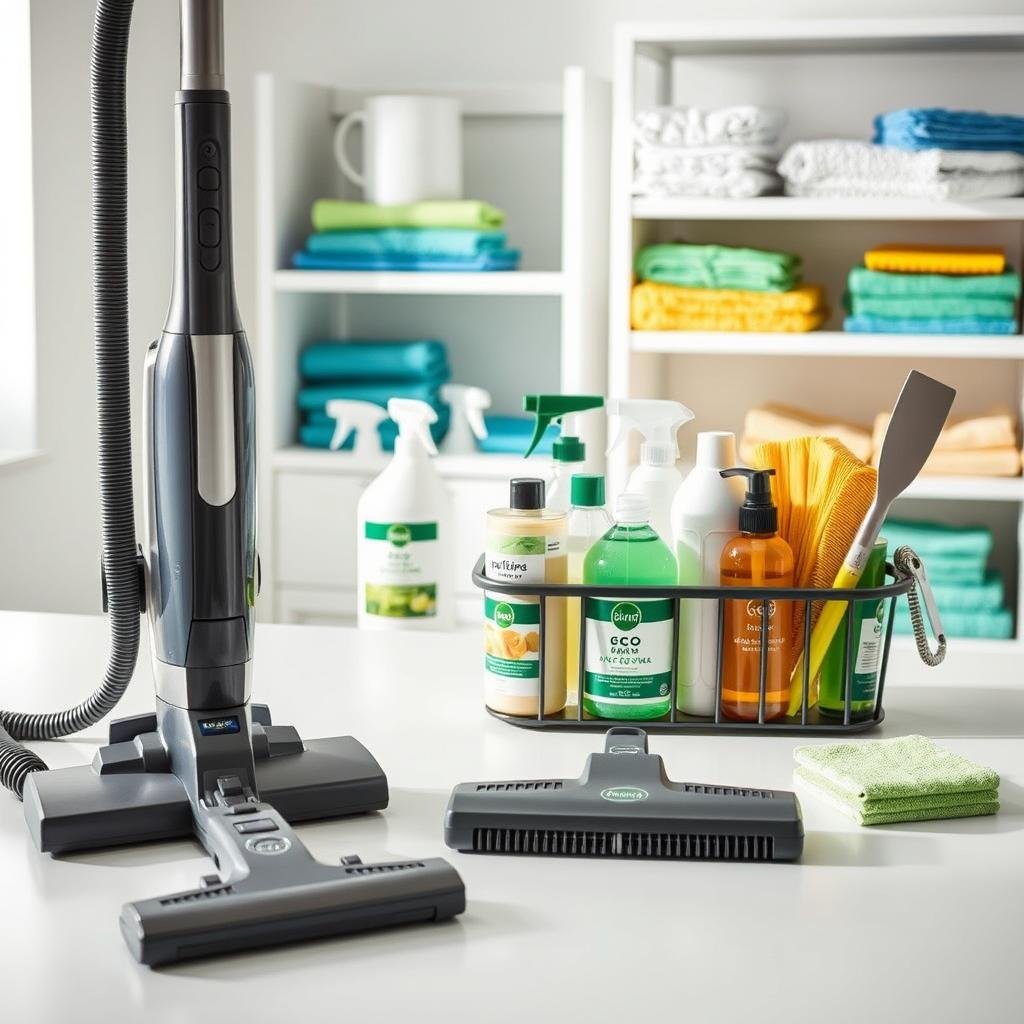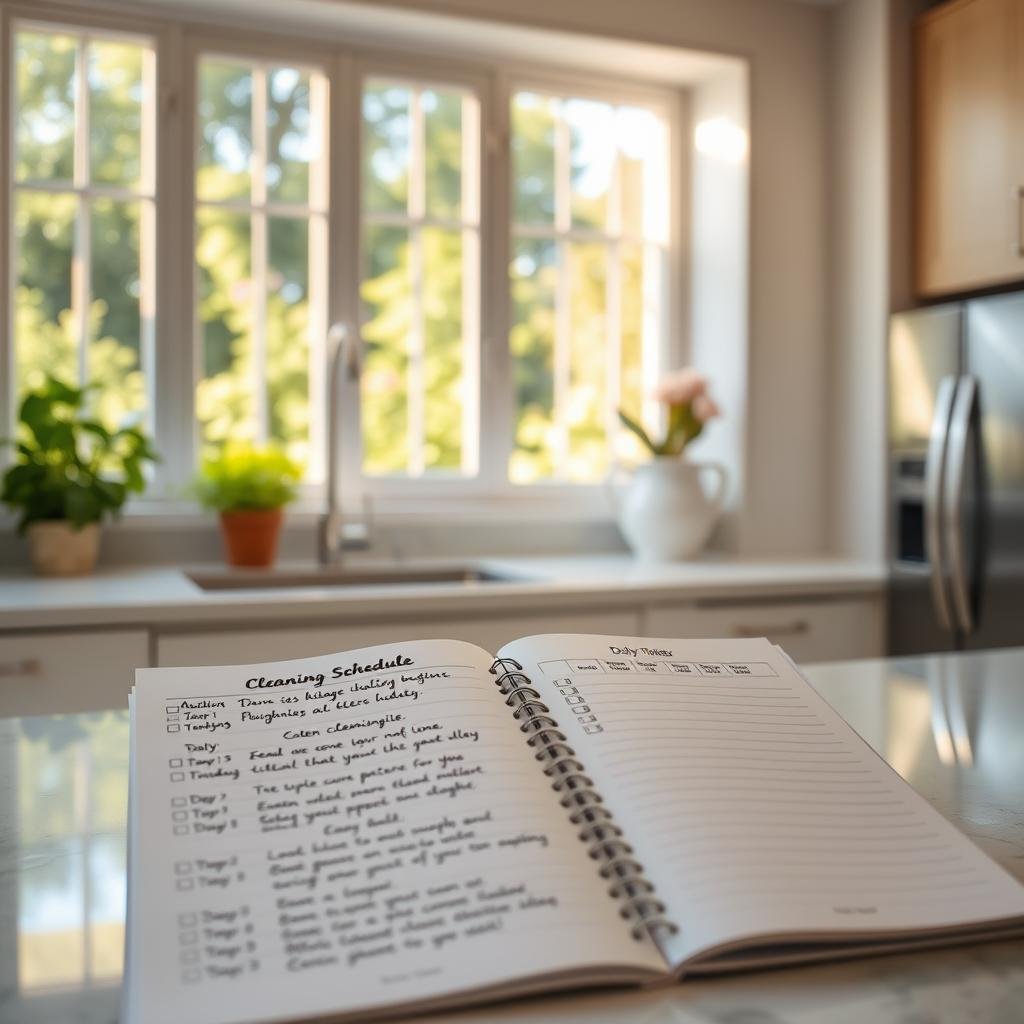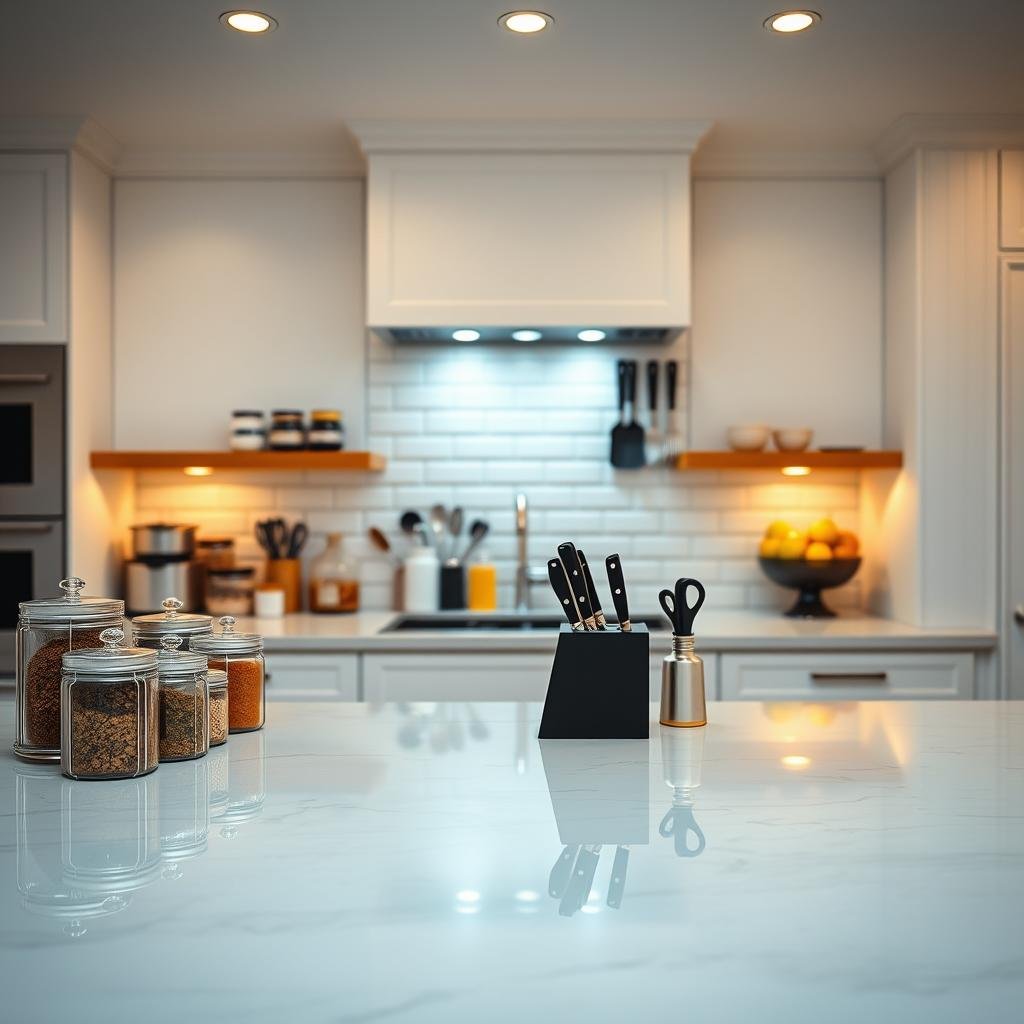Ever feel like keeping your space clean is a never-ending battle? You’re not alone. Many people struggle with balancing daily tasks and a clutter-free home. The good news? Small changes in your routine can make a big difference.
Studies show that 89% of people with spotless homes rely on quick, simple actions rather than deep-cleaning marathons. It’s not about perfection—it’s about progress. A few minutes here and there add up to a space that feels fresh and inviting.
Imagine starting your day in a calm, organized room. Or coming home to a place that instantly lifts your mood. With the right approach, you can turn cleaning from a chore into a rewarding part of your life. Ready to make it happen?
Why Consistent Cleaning Habits Transform Your Home and Mind
Clutter isn’t just messy—it’s silently draining your energy. Research shows disorganized spaces spike cortisol levels by 17%, keeping your body in stress mode. But here’s the good news: a clean organized space does the opposite. It creates a sense of calm that fuels focus and creativity.
The mental health benefits of a clutter-free space
Cleared surfaces aren’t just visually pleasing—they’re brain-friendly. A Princeton study found clutter competes for your attention, like background noise you can’t tune out. Tackling just one messy area can slash anxiety by 30%. Start with your desk or nightstand to see the difference.
How cleanliness boosts daily productivity
MIT researchers proved distraction-free zones increase work output by 22%. When your space is clean organized, your brain spends zero energy on navigating chaos. Try the “one-touch” rule: deal with items immediately to cut decision fatigue by 40%.
The ripple effect of order in your living environment
Order creates momentum. A made bed inspires tidied clothes. Clear counters motivate dishwashing. This cycle builds sense of accomplishment that spills into other areas of life. Use the “5-4-3-2-1” method: tackle five items in a room, then four, and so on. Suddenly, clutter feels conquerable.
Building Your Habit Foundation: The Psychology of Routine
Your brain craves patterns—here’s how to use them for a cleaner home. Neuroscience shows that routines light up the basal ganglia, the brain’s autopilot center. Work with your wiring, not against it.

The 21-day rule for habit formation
University College London found 40% of behaviors stick after 21 consistent days. Here’s why:
- Phase 1 (Days 1–7): Fight resistance (“I’ll do it later”).
- Phase 2 (Days 8–14): Notice progress (“This feels easier”).
- Phase 3 (Days 15–21): Enjoy autopilot (“Where’s the dust? Oh—I already wiped it!”).
Start with onetask, like making your bed first thing. By week three, you’ll do it without thinking.
Linking cleaning tasks to existing routines
BJ Fogg’s research reveals habit stacking boosts compliance by 53%. Try these combos:
- Coffee + Dishes: Load the dishwasher while brewing.
- Podcasts + Laundry: Fold during your favorite show.
- Toothbrushing + Counter Wipe: Scrub the sink for two minutes.
Pro tip: Saturday mornings beat Sunday nights—your willpower’s 32% higher post-sleep.
Turn tasks into rituals. Pair vacuuming with upbeat playlists, or reward yourself with fresh flowers after mopping. Your life gets smoother when your space does.
Essential Systems for Maintaining Consistent Cleaning Habits
Smart systems beat sheer effort when it comes to a tidy space. Instead of draining weekend deep-cleaning, these strategies turn daily cleaning into quick wins. Less time, more results—that’s the goal.

Designate “clean-as-you-go” zones
Focus on high-traffic spots first. Entryways and kitchen countertops collect 80% of daily clutter. Keep supplies nearby:
- Entryway: A basket for keys and a microfiber cloth for quick surfaces wipes.
- Kitchen: Store spray and a sponge under the sink for spills.
Hotels place cleaning caddies in every room—copy this trick. A Home Advisor survey found color-coded zones cut cleaning time by 32%.
5-minute daily bursts save hours
Set a timer for hyper-focused sessions. Scrape burnt food while coffee brews. Wipe bathroom mirrors during toothpaste’s 2-minute wait. These minutes add up:
- Morning: Clear one hotspot (e.g., coffee table).
- Afternoon: Sweep crumbs after lunch.
- Evening: Toss trash while dinner cooks.
Home Advisor notes this boosts efficiency by 78%.
Visual cues that stick
Bright sticky notes on the fridge outperform apps for tracking cleaning tasks. Try these:
- Neon dots on light switches remind you to dust.
- A checklist by the door mimics restaurant closing routines.
Pro tip: Red triggers urgency—use it for high-priority zones like the kitchen.
Your Daily Cleaning Game Plan
Small actions spread across your day keep chaos at bay. Real Simple data proves a 9-minute morning routine saves 47 weekly minutes. Win back time without marathon scrubbing.

Morning quick-hit checklist
Start strong with the 90-second bed-making ritual. This tiny win sets your trajectory. While coffee brews, wipe surfaces and load yesterday’s dishes. Two minutes here prevents afternoon overwhelm.
Afternoon maintenance moves
Channel kindergarten teachers: do a 2pm “toy roundup.” Toss trash, put away stray items, and scan for hotspots. These micro-tasks add up to a calmer evening.
Evening reset ritual
Navy SEALs prep gear nightly—copy their focus. Spend 10 minutes:
- Load the dishwasher after dinner.
- Put away clothes while watching TV.
- Quick sweep of high-traffic zones.
The National Sleep Foundation links evening resets to 31% better rest. Your future self will thank you.
Kitchen Command Center: Keeping Your Heart of the Home Spotless
Your kitchen thrives when treated like a high-performance workspace. Chefs know: a clean home starts here. With a few strategic moves, you’ll spend less time scrubbing and more time enjoying your space.

The 60-second countertop rule
Good Housekeeping found wiping spills immediately prevents 92% of stains. Adopt the “mise en place” mindset: clean as you cook. Keep a microfiber cloth handy for quick countertops wipes. Bonus: dental floss slices through grease like a pro.
Appliance maintenance made simple
Follow the 1-10-100 rule: $1 prevention beats $10 repairs. Weekly fridge audits cut food waste by 40% (USDA). For effortless weekly cleaning:
- Run vinegar through your coffee maker.
- Use baking soda to freshen the microwave.
- Wipe fridge seals with a lemon wedge.
Next-day prep that saves time
Michelin-star kitchens use “closing shift” rituals. Before bed:
- Load the dishwasher (even half-full).
- Soak pans to avoid morning scrubbing.
- Prep tomorrow’s dishes ingredients.
This 10-minute routine saves 30 minutes later.
A clean home starts with a happy kitchen. Skip the deep cleaning marathons—small, smart actions keep it shining daily.
Living Area Strategies for Effortless Tidiness
Your living room doesn’t have to be a clutter magnet—here’s how to fix it. With 15-minute family blitzes preventing 83% of mess buildup (Marie Kondo), small tweaks make big impacts. Think like a museum curator: display what sparks joy, store the rest.

The “one-touch” rule for clutter
Touch items once—then decide. Toss junk mail immediately. Relocate stray toys to bins. This cuts decision fatigue by 40%. Keep a “donate basket” by the door for outgrown clothes or unused gadgets.
Strategic storage solutions
Vertical storage adds 37% more space (Container Store). Try these hacks:
- Place baskets under coffee tables for remote controls.
- Use library carts for books—they’re mobile and stylish.
- Install floating shelves to display decor, not clutter.
High-traffic area maintenance
Copy airports: clean high-traffic zones hourly. Focus on entryways and coffee tables. A Scandinavian “landing strip” (hooks + tray) catches keys and mail. Weekly dusting takes 5 minutes with microfiber cloths.
Hotels reset rooms in 10 minutes—you can too. Fluff pillows, fold throws, and clear surfaces nightly. Your house stays guest-ready without marathon cleanings.
Making It a Family Affair: Shared Responsibility Systems
Teamwork makes the dream work—especially when it comes to keeping your home tidy. Harvard researchers found kids who help with chores develop 32% higher emotional intelligence. When everyone contributes, you’ll spend less time cleaning and more time connecting.

Age-appropriate chore charts
Assign tasks based on ability. A 5-year-old can sort toys, while teens tackle laundry. Try these strategies:
- Preschoolers: Use picture charts with stickers for completed jobs.
- Elementary kids: Rotate weekly duties like feeding pets.
- Teens: Give them ownership—like managing the dishwasher.
The weekly 15-minute family blitz
Set a timer and turn chores into a game. Behavioral studies show gamification boosts participation by 68%. Here’s how:
- Play upbeat music (the “clean-up song” works magic).
- Race to finish tasks before the timer ends.
- Celebrate with a Friday pizza night—earned by teamwork.
Reward systems that motivate
Skip cash incentives. Instead, try:
- Life skills badges (e.g., “Laundry Master”).
- A rotating “Cleaning Olympics” champion title.
- Family movie night after a month of completed tasks.
Pro tip: Let younger members pick rewards from a pre-approved list. They’ll feel empowered and invested.
Sustaining Your Clean Home Momentum for Life
Celebrate progress, not perfection—your home clean thrives with simple systems. James Clear’s research proves quarterly audits boost habit success by 89%. Review what works, tweak what doesn’t, and keep moving forward.
Monthly habit audits
Treat your routine like a Fortune 500 company. Every 3 months, ask:
- Which things saved the most time?
- Where did friction creep in?
Military after-action reviews work wonders—adjust one thing each audit.
Flexibility for busy seasons
Survival mode happens. Create a “clean-ish” schedule for hectic weeks. Focus on high-impact zones like kitchens. A 5-minute reset beats zero effort.
Celebrating small wins
Stanford studies show 15-second celebrations (fist pumps count!) release dopamine. Track wins with a thermometer chart. Annual deep cleaning? Pair it with birthday energy—make it fun!
Your home reflects your life—keep it joyful, not rigid.
